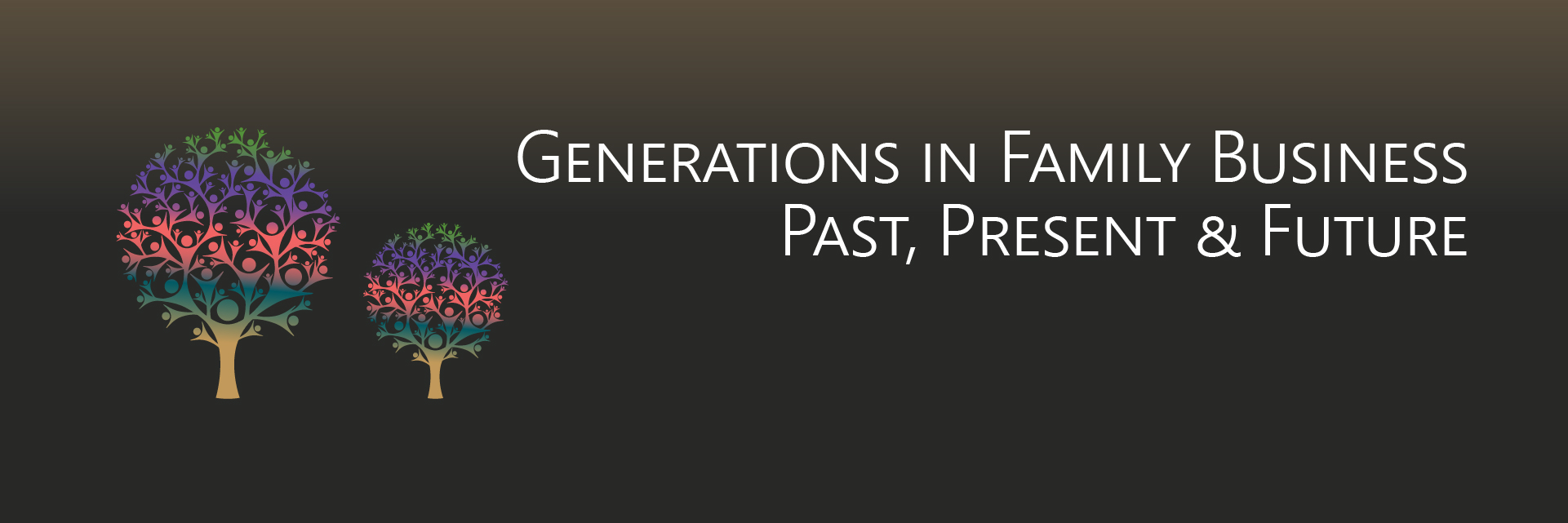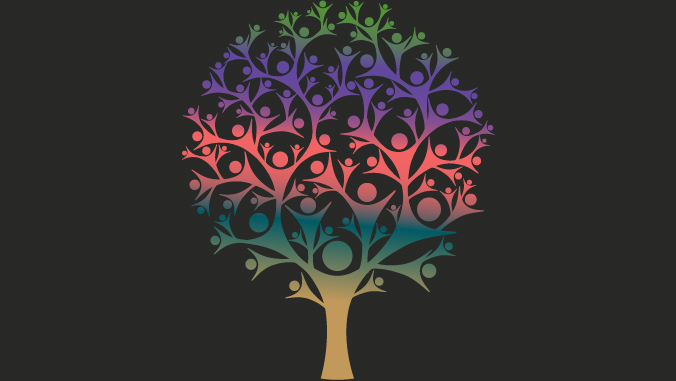
Human Resource Management Diagnostic Model: Rewarding & Recognizing Talent
- Published
- Apr 29, 2019
- Share
Matt Kerzner and Tim Schuster continue the conversation of the Diagnostic Model for Human Resource Management; specifically Rewarding Human Resources and why it’s important.
Transcript
Tim Schuster: Welcome to our podcast for Generations in Family Business: Past, Present and Future. Our host for this podcast are myself, Tim Schuster, I'm a manager in The Center for Family Business Excellence; and, as always, with us today is …
Matt Kerzner: Hi, I'm Matt Kerzner and I'm a senior manager within The Center for Family Business Excellence.
TS: Matt, let me tell you, it's great to see you.
MK: You as well. Tim, how's busy season going?
TS: It is fascinating to say the least, but that'll be a topic for another day. To continue on our conversation of the diagnostic model for human resource management, we discussed in our last podcast an overview of the human resource process, specifically acquiring human resources. Our focus is on people and results. We are now going to continue the conversation and do a deep dive on each process. Matt, let's start today by discussing rewarding human resources. Let's remind our listeners why this is that great.
MK:Thanks Tim. First just to level set with everybody, the last podcast we talked about acquiring human resources, right? Bringing in the right people, bringing in talent. And the worst thing you could do with people when you bring them on is do nothing with them. When people start working for an organization, they want to do well, right? They come in, they're very motivated. But the problem is that within the first 90 days they might not get what they need from supervision, from management, from the company. Today I want to talk a little bit about performance model and how to reward and recognize people to keep them motivated. One of the things that's very important is setting an expectation. When new people start with a company, managers need to say, listen, here's the rules, here's the norms. This is what our culture is of the organization and this is what's expected. This is what's expected in our department, the overall company, and here's our goals. That's setting an expectation and then it's very important for a supervisor to get out of their office, get on the shop floor and actually monitor the work. Once they set that expectation, once they have goals set with their employees, get out there and see what's happening, getting into the weeds essentially, just getting out there and seeing what's happening. Then once that happens you have to provide either feedback for doing a really good job and you want to keep that behavior going, right? It's behavior modification of keeping that behavior going. Recognizing when they're doing something well. If they're not and you’re monitoring actions and you need to actually give feedback for improvement, you want to do that as well. Right? It's setting that expectation, seeing what's happening and then providing feedback. As human beings, we need that feedback. If we don't, productivity could decline because we're not getting what we need. I always ask, when I work with owners of family businesses: What gets them the most frustrated? For them, the answer is finding the right talent and then retaining them. Then I say, what do you do within the first 30, 60, 90, even 180 days with them coming into the organization? They say, well, we do orientation. We might do a little bit of on-the-job training, but where's the follow-up? No check-ins. Then again, productivity declines and then they want to scratch their head why they're losing people within the first 90 days. It's because the people are not getting the feedback that they need.
TS:That actually makes a lot of sense. That is important. It's imperative for anyone who's doing a job just to make sure. A lot of people make the assumption that no news is good news. In some instances, but if you're not getting that positive feedback, you're not going to be able to really definitively know if you are doing a good job or not.
MK: That's right. Another important thing is when I work with leaders in family businesses, tightly held businesses. I talk a little bit about when you deliver positive reinforcement, you need to understand the difference between reward and recognition. What's critical here is you can recognize somebody for doing a job well done and just explain to them, Tim, you know the fact that you put these podcast agendas together and do these things. It's excellent and I really appreciate the work that you put into this. There’s a lot of value that we get as an organization for the work that you do. That's an example of recognition. I don't need to give you any monetary value, but I'm explaining to you why it's important for what you do. That's recognition.
TS:Right and then I feel good hearing that. And vice versa too for you as well.
MK: It's like feeding that emotional bank account. What's critical here is you can't just give a reward to somebody without recognizing them. You can recognize and not give a monetary value to somebody, but you can't give a monetary value without explaining why you're giving it to them. When I talk sometimes when bonuses are given out or recognition or rewards for doing a job well done, sometimes people see it in their paychecks or they get this but they don't know why they're getting it and you're losing out on that. It's very important that organizations understand and leaders understand the difference between reward and recognition, how to deliver it and how to monitor those actions to make sure that you're getting the results that you're looking to get out of it. And then the other part is when you're giving feedback for improvement, you have to make sure that you're maintaining self-esteem of the person you're delivering feedback too. You don't want to personalize it by saying you, you want to use the word we. You want to make sure that when you're delivering feedback for improvement, that it's done in a way -- we use a model called what and why, what was said or done that was ineffective and what could be done better to make it more effective. Then when I coach and work with leaders or supervisors that work with people, I want to explain to them that delivering feedback for improvement is not a negative, it's positive; but it's how it's coming across to people. We use methodologies in the Center to teach people on how to set an expectation, how to monitor, and then how to deliver that feedback for recognition and feedback for improvement.
TS: Well that makes perfect sense. Now to bring this full circle, with our first set of podcasts that we were working through in regards to the strategic roadmap, how can we link this to the strategic roadmap?
MK:Great question. I look at, first of all, there were three pillars of the strategic roadmap. First, the mission, vision, values, and the major goals. But the three pillars that really drive the strategic roadmap is growing the business, generating revenue. Operating efficiencies is the second one, and then the third one is people development. If you really think about it, I look at reward and recognition really falling into growing the business and people development. It could be operating efficiency too-giving feedback. Really could be all three of them. Here I am thinking of the two, but it's really all three. So they're linked to those three pillars. If you're trying to grow the business and grow your revenue, you absolutely want to set an expectation with your marketing department or your operations department or those who are going to be ordering product. To make sure that they're ordering enough, to actually do what they have to do. If they're doing it well and you're starting to see that your revenues increase, give them feedback. Then again, if you're not hitting your mark and there should be some type of process that's put together once a quarter, where there's some type of discussion about the expectations and what you did to monitor and how you're giving feedback so there's no hidden process or surprise. Regarding operation efficiency, if you're asking for ideas and you're setting an expectation that you want to reduce paper, get away from paper and just do things electronically, if people are doing it and you're starting to see your profit and loss statement be positive, give her some recognition on that. Then obviously for the people development, the more feedback that employees get, the better they're going to produce and the more skill set that they'll add to their own personal growth.
TS:That makes sense to me. That's awesome. Matt, thank you so much for these useful information and thank you for listening to Generations in Family Business: Past, Present and Future as part of the EisnerAmper podcast series. If you have any questions or there's a topic you'd like us to cover, email us at contact@eisneramper.com. Visit eisneramper.com for more information on this and a host of other topics. We look forward to have you listen in on our next EisnerAmper podcast.
Also Available On
More in this Series

Human Resource Management Diagnostic Model

Human Resource Management Diagnostic Model: Developing Human Resources

Human Resource Management Diagnostic Model: Maintaining Human Resources

Human Resource Management Diagnostic Model: Attracting Talent

Human Resource Management Diagnostic Model: Human Resource Processes

Human Resource Management Diagnostic Model: Human Resource Processes
What's on Your Mind?
Start a conversation with Timothy
Receive the latest business insights, analysis, and perspectives from EisnerAmper professionals.












